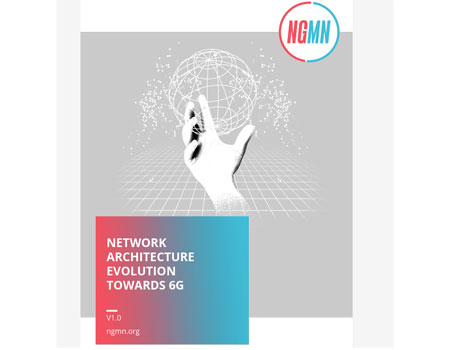
5G includes Virtual Reality from day 1!
October 4, 2018
By Frédéric Gabin, Gilles Teniou and Thomas Stockhammer
To help address the 5G Phase 1 service requirements for Virtual Reality (VR), the 3GPP Codec and Media Working Group (SA4) has completed work on the support of 360° VR streaming services, within Release-15 of the specifications.
Virtual Reality is the ability to be present in a space created by the rendering of natural or synthetic image and sound. To facilitate that presence a set of VR Video and Audio operating points and their mapping to Dynamic and Adaptive HTTP Streaming (DASH) have now been specified in 3GPP specification TS 26.118.
The specification is based on the definition of TV video profiles in 3GPP Release 14, but adds the extensions needed to enable VR services over the large range of device types envisaged for the market.
The SA4 effort started in April 2016 with a study on VR collecting dedicated technology descriptions, use cases and subjective VR tests. The findings of that initial study were documented in the 3GPP technical report TR 26.918.
Normative work started in October 2017 for the definition of VR profiles for streaming applications. The 3GPP specification TS 26.118 is the first open standard that defines requirements on the end-user equipment to ensure a quality of experience that meets user’s expectations for Virtual Reality on 5G.
Three Video operating points are defined:
- Basic H.264/AVC: using H.264/AVC High Profile Level 5.1 for mono only, single stream, and reuse of single stream DASH streaming. This profile addresses legacy services and devices.
- Main H.265/HEVC: using H.265/HEVC Main-10 Profile Main Tier Profile Level 5.1allowing mono and stereo, single stream, but either a single or multiple independent Adaptation Sets may be offered, such that a client can choose based on its current pose. This profile allows reuse of existing file format and DASH implementations also for VR Streaming.
- Flexible H.265/HEVC using Main H.265/HEVC Main-10 Profile Main Tier Profile Level 5.1, but in addition to the Main H.265/HEVC features, it permits to stream and combine multiple tiles at the receiver for improved quality.
One Audio operating point is defined:
- The OMAF 3D Audio Baseline Media Profile is based on MPEG-H 3D Audio Low Complexity profile enabling the distribution of channel, object and scene-based 3D audio.
In addition to TS 26.118, the audio work for VR is supported by:
- 3GPP TS 26.259 Subjective test methodologies for the evaluation of immersive audio systems
- 3GPP TR 26.818 Virtual Reality (VR) streaming audio; Characterization test results.
These two deliverables provide a unique full framework for 3D audio characterization.
New Workshop announced
The completion of the work provides a response to the demand identified during the successful 3GPP- Virtual Reality Industry Forum (VRIF) joint Workshop on Virtual Reality that took place in Santa-Clara, California in December 2017. This Workshop was an integral part of the development of 3GPP Virtual Reality Profiles for Streaming Applications.
3GPP and the VRIF, in cooperation with the Advanced Imaging Society (AIS), are announcing the second Workshop on VR Ecosystems & Standards, themed “Immersive Media meets 5G”. The workshop will take place on 15-16 April 2019 in a US West Coast location (exact place TBC), immediately after the NAB trade show and the 3GPP SA4#103 meeting.
The second edition will focus on next-generation immersive formats and services, including Virtual, Augmented & Mixed Reality, and it will investigate 5G business opportunities brought by immersive services – as well as their requirements. The workshop is integrated in the newly approved 3GPP Study item in Release 16, on Extended Reality over 5G (FS_XR5G).
For more Workshop information:
Stay tuned for more information on the 3GPP (3gpp.org) and VRIF (vr if.org) websites, or feel free to contact one of the organizers:
| Frédéric Gabin 3GPP SA4 Chairman |
Rob Koenen VRIF President |
3GPP SA4 details & contacts:
3GPP SA4 is composed of key players in the audio-visual content distribution, including service providers, network operators, network equipment vendors, smartphones and chipset manufacturers as well as technology providers. Altogether, they ensured the interworking throughout the end-to-end 3GPP delivery chain of the selected technical enabler for immersive experiences provided by 360 degrees Virtual Reality, thus enabling the media industry to increase the content value.
Frédéric Gabin – TSG SA4 WG chairman
Gilles Teniou – TSG SA4 Vice-chairman - TSG SA4 VIDEO SWG chairman
Thomas Stockhammer – VRStream work item and FS_XR5G rapporteur
3GPP Studies and Specifications related to this article:
| TR 26.918 | Virtual Reality (VR) media services over 3GPP |
| TS 26.118 | 3GPP Virtual reality profiles for streaming applications |
| TS 26.259 | Subjective test methodologies for the evaluation of immersive audio systems |
| TR 26.818 | Virtual Reality (VR) streaming audio; Characterization test results |
Contact for this article: Kevin FLYNN, Marketing and Communications Officer, 3GPP

 3GPP News
3GPP News




